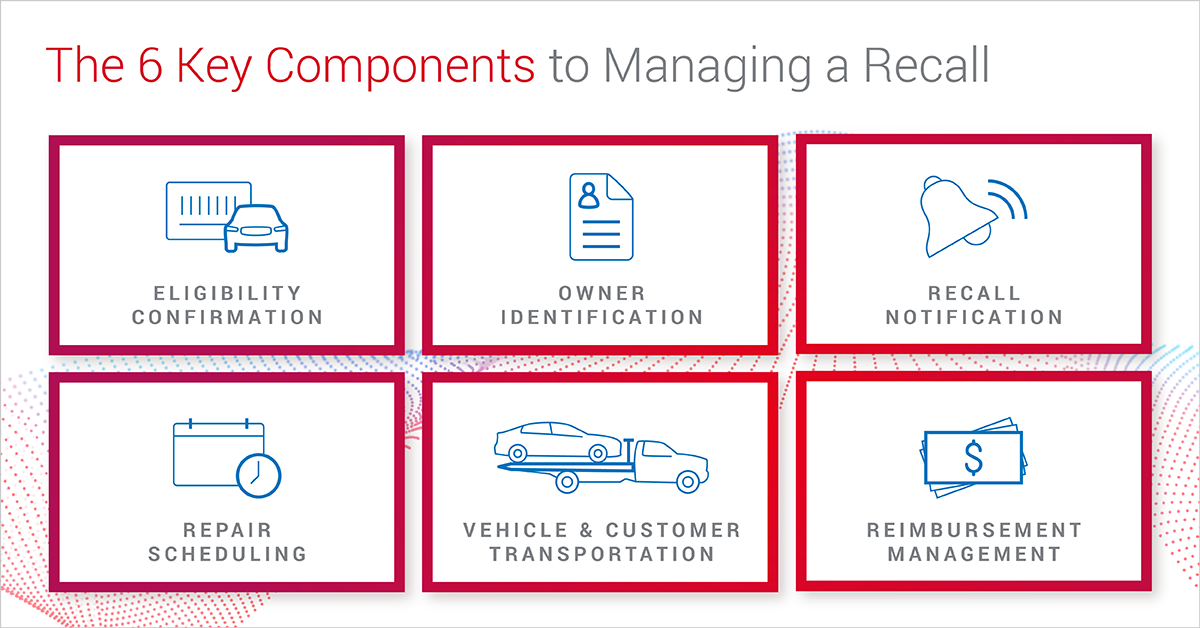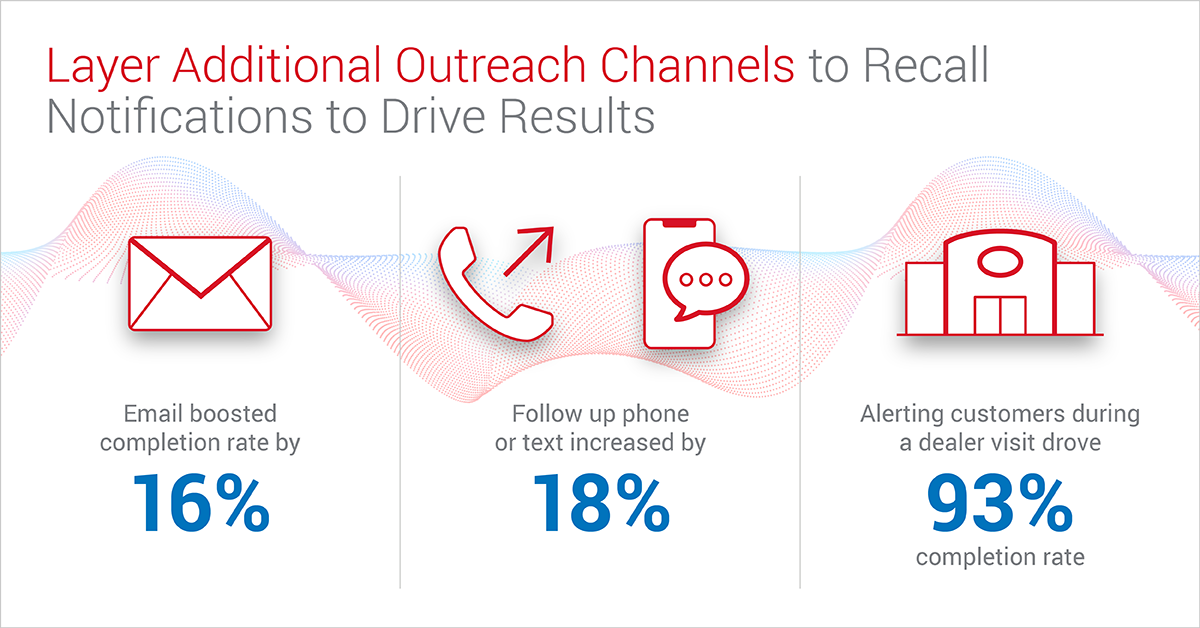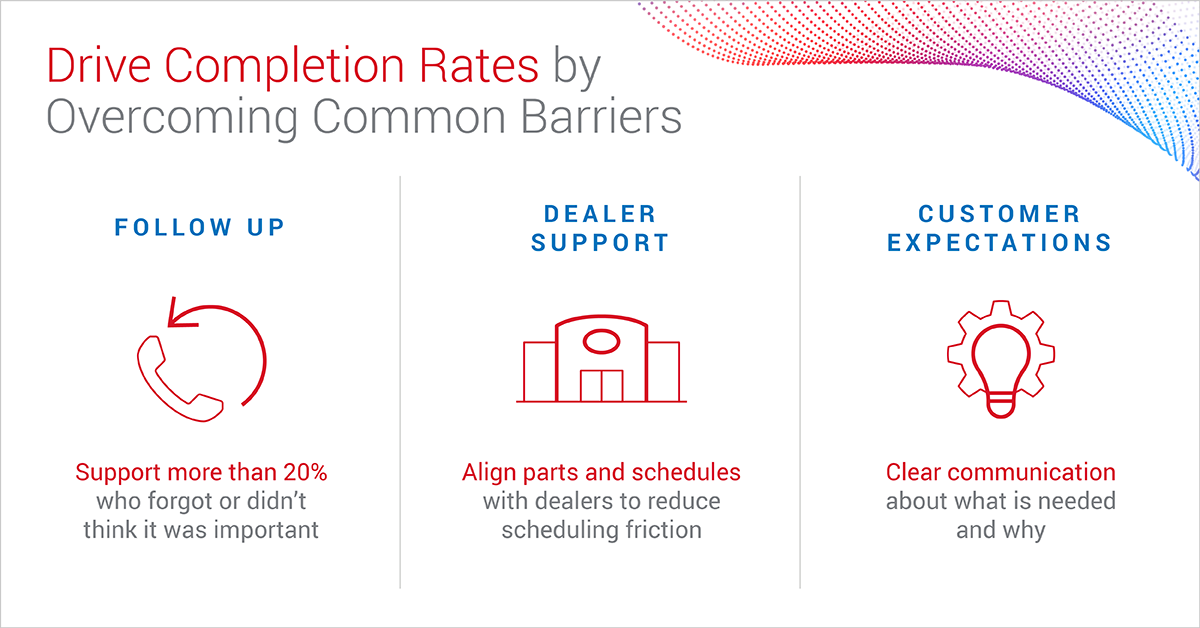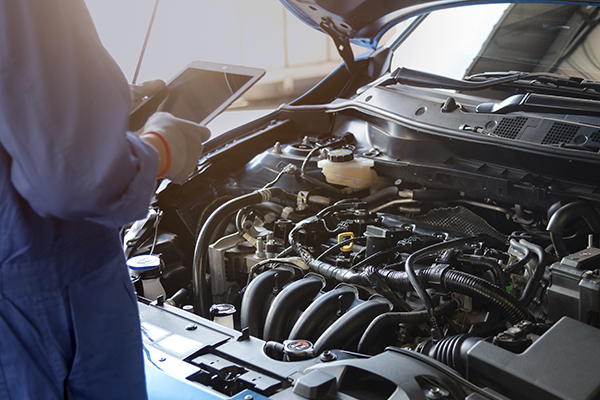Takata airbags are the largest recall in the history of the auto industry. Since the issue was first uncovered in 2013, 28 deaths and more than 400 injuries have been attributed to the faulty inflators which may malfunction and send shrapnel into the cabin. Over the past 8 years, more than 42 million vehicles have been recalled effecting nearly every major manufacturer and leading to the bankruptcy of Takata.
Unfortunately, recent investigations from the NHTSA suggest that up to 30 million additional vehicles may also be impacted. This once again puts most major OEMs in a challenging position. With more than a decade of experience in this space, we have some best practices to assist in managing a critical supplier safety recall.

Best Practice #1: Don't Get Stuck on Repeat
There’s nothing more frustrating and damaging to the brand then contacting the wrong customers about a recall. Equally frustrating is re-contacting customers who have already completed the repair. Avoid duplication with a clear detailed campaign and regular updates against repair records. These updates can be done with a simple file upload or through an integrated solution.
Best Practice #2: Right owner, first time
The first challenge in any recall is determining the current vehicle owner. Today, the average vehicle lifetime is more than 12 years often across several owners. As vehicles age, recall completion rates fall, driven by the challenge and complexity of determining the current owner. A key to ensuring the right owner is cross checking the VIN against validated ownership records. Even better, integrate VIN validation directly into your recall solution to avoid manual transfer and data entry errors.
Best Practice #3: Notifications that Get Noticed
What you say and how you say it can be a game changer in driving recall completion rates. Mail is required for all recall notifications. However, layering on additional channels including phone, email and text can help boost completion rates by more than 8%. And of course – every touch point with customers should reflect your brand and your messaging. Configurable templates can be a great tool to ensure the right message is delivered in your voice and tone.

Best Practice #4: Get it on the calendar
Coordinating scheduling can be key to making the leap from notification to repair. In fact, we found that more than 20% of owners notified of a recall were unable to find a convenient time to schedule repair and another 18% attempted to schedule their repair only to find out that the parts were not available at their dealership. Coordination with dealers is key and tools to facilitate this range from 3 way calling between agent, dealer and customer to direct schedule integration.

Best Practice #5: A little help with transportation
Reduce barriers in recall completion by making it easy for customers. Vehicle and customer transportation can reduce the disruption to their schedule and drive both completion rates and customer satisfaction. Many dealers have loaner programs but coordinating a tow can be expensive and challenging. Support customers and your program by including vehicle pickup and alternative transportation in your recall effort.
Best Practice #6: Quick and easy reimbursements
In a recent Agero recall campaign, we found that 12% of impacted vehicles had already completed the recall prior to notification. Make it easy for customers to quickly and easily get reimbursed. An easy to use branded reimbursement portal with automated logic can streamline your customer experience and make it easy on your team as well.
Best practice #7: Connect with an experienced partner
But most importantly, connect with an experienced automotive focused recall partner that can help you quickly and efficiently stand up a campaign that matches your brand, your campaign needs and supports your customers every step of the way.
For more on how to manage a critical supplier recall,
download the white paper.





 Jason Peters is the Business Leader for Agero’s Consumer Affairs and Connected Vehicle line of business. Prior to joining Agero in 2017, Jason spent 6 years at CVS Health in strategic product development as well as 8 years in strategic consulting at Boston Consulting Group and The Parthenon Group. Jason is an active member of his community and can often be found coaching youth sports. Jason holds a bachelors in Government from Harvard University and an MBA from Wharton at the University of Pennsylvania.
Jason Peters is the Business Leader for Agero’s Consumer Affairs and Connected Vehicle line of business. Prior to joining Agero in 2017, Jason spent 6 years at CVS Health in strategic product development as well as 8 years in strategic consulting at Boston Consulting Group and The Parthenon Group. Jason is an active member of his community and can often be found coaching youth sports. Jason holds a bachelors in Government from Harvard University and an MBA from Wharton at the University of Pennsylvania.